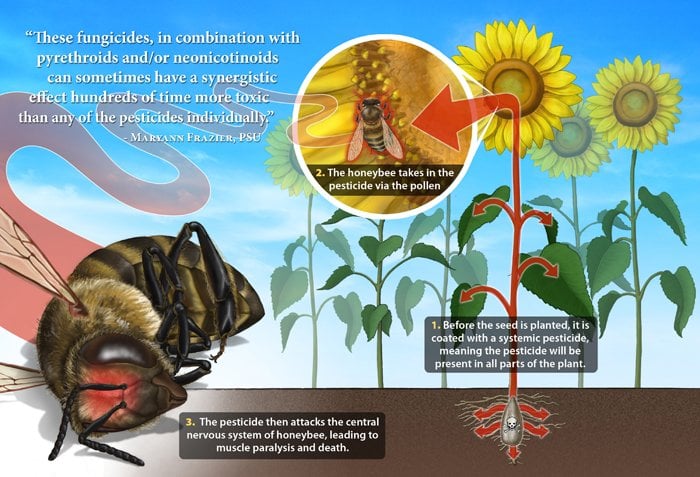Scientists have warned that exposure to neonicotinoids – the worlds’ most commonly used insecticide – is damaging the vital pollinators’ brains, preventing them from walking in a straight line.
As we know, the world’s insects are hurtling towards extinction.
Among them – most alarming of all – are a species integral to our natural ecosystems and consequently, human life. I’m talking, of course, about bees, whose overall population has declined dramatically over the years in tandem with global heating.
To put this into perspective, previous findings show that every square kilometre in the UK alone has lost an average of 11 species of bee between 1980 and 2013.
Yet regardless of the role these organisms play in maintaining our planet’s fragile balance and the threat their disappearance poses to our existence on Earth, no one seems to care all that much.
At least not enough to stop using modern pesticides, which scientists have warned are getting these vital pollinators ‘drunk.’
And if that brings to mind the image of an intoxicated driver trying to walk without stumbling after being stopped by police, then you’ve hit the nail on the head.

Because according to new research, neonicotinoids (the most common insecticide) are damaging bees’ brains and preventing them from walking in a straight line.
As explained by the report, exposure to such chemicals is diminishing their innate ‘optomotor’ response, which bees rely on to orient themselves back onto an even trajectory when they veer off-track while flying.
Not only is this harming co-ordination but its lowering their ability to forage, navigate, and pollinate wildflowers and crops. If this trend continues, it will have large-scale adverse effects across the globe.




















